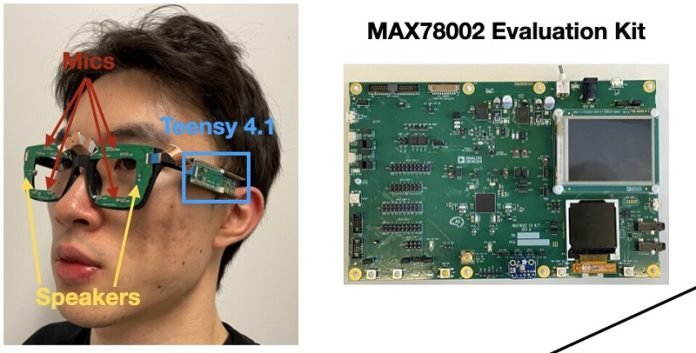
Have you ever imagined glasses that can tell where you’re looking or if you’re smiling, without even touching you?
Researchers at Cornell University have made this a reality with some cool new tech for smartglasses.
These aren’t your regular glasses; they can figure out your gaze and facial expressions using a method similar to sonar, which is usually used by bats and submarines!
This tech is tiny enough to be added to everyday smartglasses or even the fancy goggles used in virtual and augmented reality, all while being energy efficient.
This means it won’t drain your battery quickly.
There are two parts to this invention. The first part, called GazeTrak, can tell where you’re looking by bouncing silent sound waves off your eyes.
The second part, EyeEcho, watches the changes in your facial expressions by catching how these sound waves bounce back from your face.
What’s even cooler is that it can turn your expressions into animations for a digital avatar, in real time!
Both of these gadgets can run for hours on a simple smartglasses battery, and even longer on VR headsets. Cheng Zhang, the smart mind leading this project, says, “It’s small, it’s inexpensive, and it uses so little power, you’d barely notice it’s there.
Perfect for wearing your smartglasses every day without worrying about running out of juice.”
In the world of virtual reality, making sure you can mimic a person’s gaze and facial expressions accurately is key to having great interactions.
Ke Li, a student leading this project, shares that for GazeTrak, they placed a speaker and four microphones near the eyes on the glasses to pick up these sound waves. For EyeEcho, they placed a speaker and a microphone near the hinge of the glasses to catch the movement of the skin when your face moves.
This technology doesn’t just make your virtual hangouts cooler. It could also help people with vision problems by reading out text from websites as they look around.
Plus, it has the potential to help doctors keep an eye on certain health conditions from a distance by tracking changes in facial expressions and eye movements, which can be signs of diseases like Alzheimer’s or Parkinson’s.
These breakthroughs will be shown off at some big tech conferences, and their findings are already making waves online.
Imagine the possibilities – from making video calls without lifting a finger to helping doctors monitor patients more closely. These sonar glasses could change the way we interact with technology and each other.
The findings were published on the arXiv.



